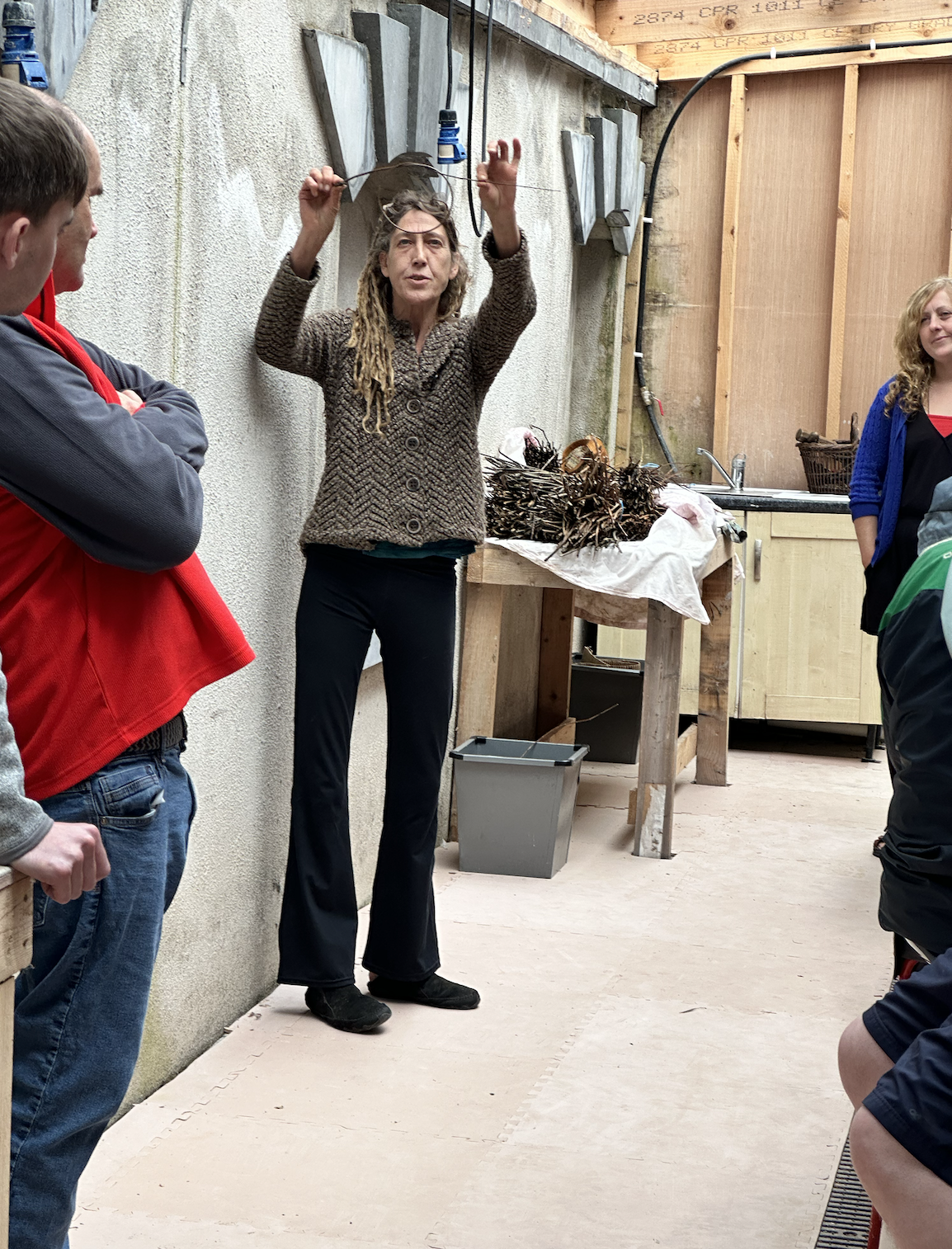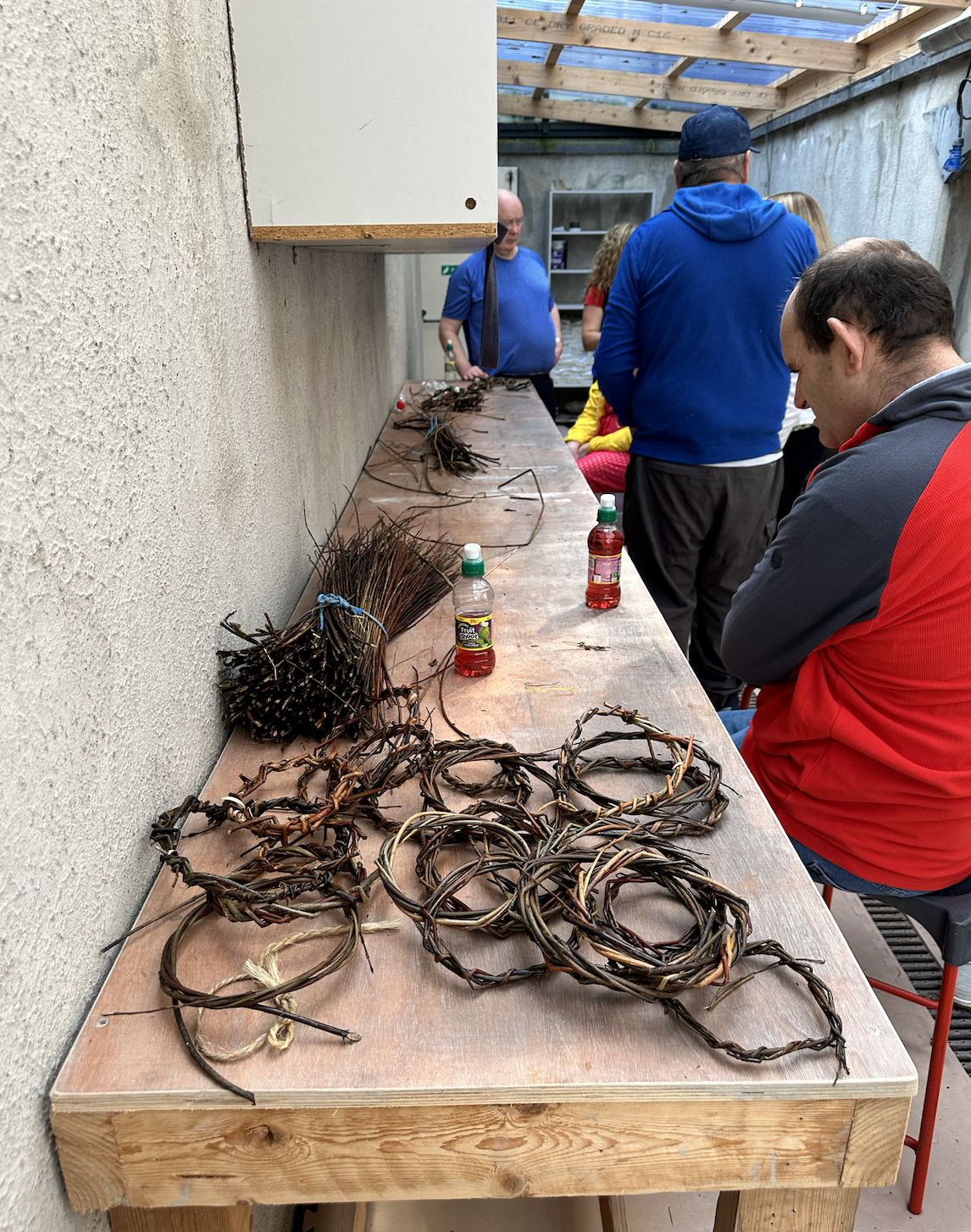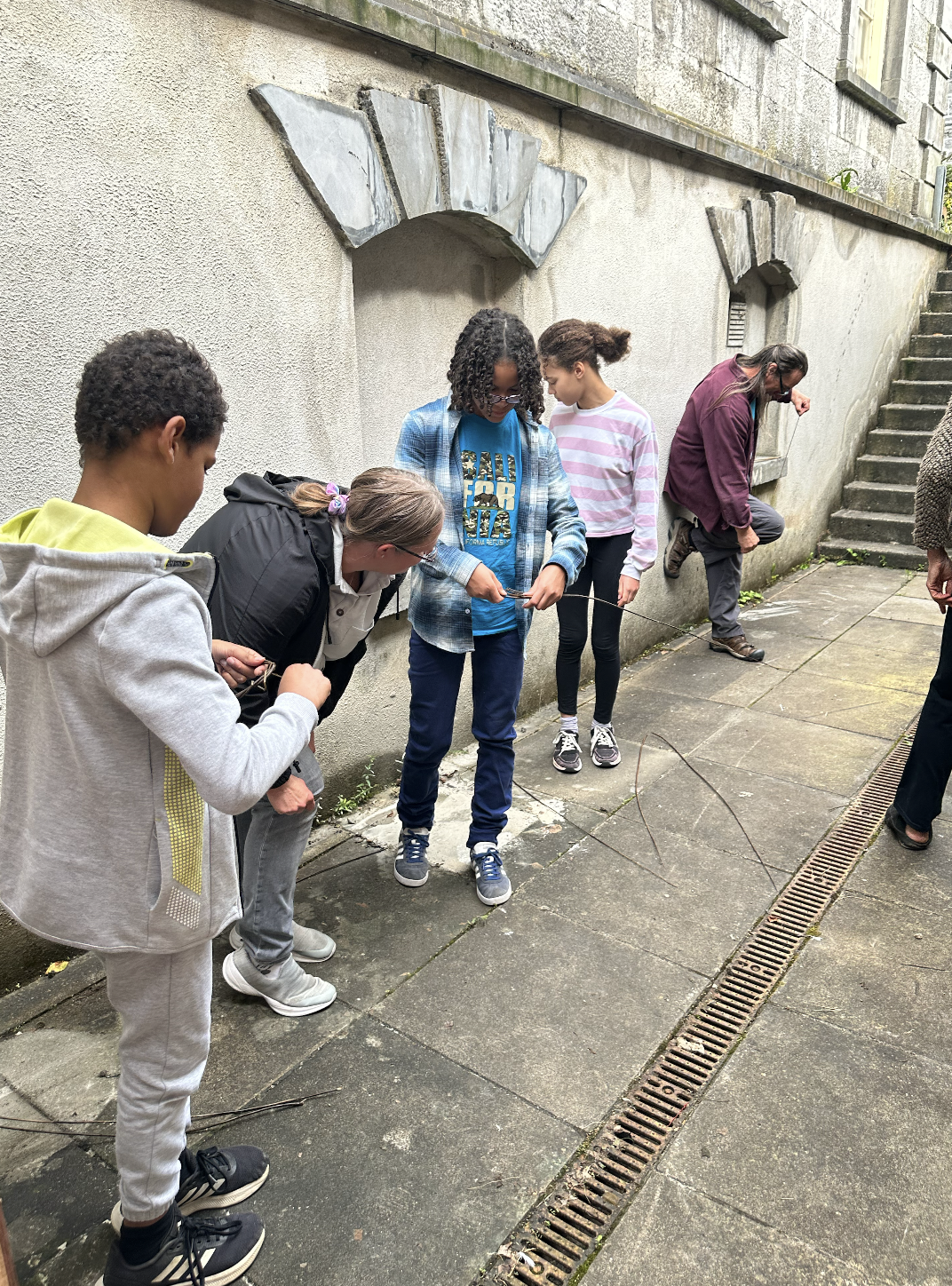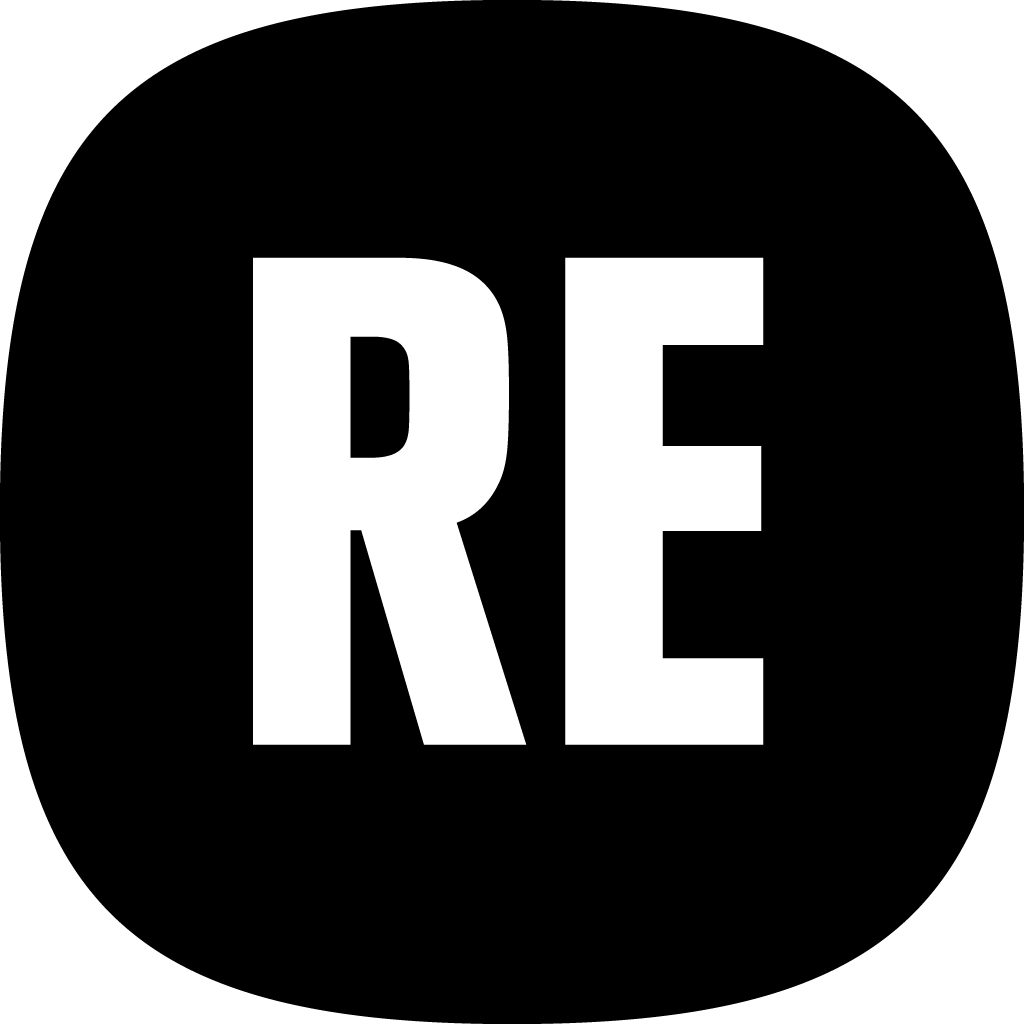Weaving a Mhuc Dhubh at The Hunt
On August 17, a part of the RECHARGE team went on tour to Limerick, to take part in The Hunt Museum RECHARGE Living Labs business model testing process: a willow weaving workshop.
The workshop was structured as an all-day drop-in session, where people could come, register and take part in the activity experienced willow artist Lynn Kirkham devised for the audience: weaving a reproduction of a significant object part of the museum collection: a Mhuc Dhubh, a fantastic animal - a black pig - that held a central role in many Celtic legends and in the irish Samhain, the season when real and under world open to each other, allowing the living and the dead to meet again.

The object selected for this workshop is a small statuette of a boar made of ceramic. Lynn designed a giant copy of it made of willow branches, whose parts were made of willow circles woven together by the participants of the workshops. All the circles, the basic elements of the sculpture, were one-of-a-kind, as individual expressions of their makers: different according to the ability, the hands, even the taste of the people who engaged in the weaving - and the final result harmonises all the contributions.

The atmosphere was joyous and light, and everyone felt part of something bigger while learning something. In making parts, people were keen on imagining and then finally seeing the final result, which was made by them, and therefore belonged to all of them.

As participants, the workshop was a gateway to learn about the traditions and customs of Limerick. It was also a way to experience the communities engaging with the museum in different ways, which made us think about one of the key questions, I think, we should be asking ourselves when working in cultural institutions: what is their future? How do they have to evolve to maintain their position in the life of local citizens and tourists alike, or to re-establish themselves as a space of inclusion and sharing of knowledge? And who are the ‘new’ museum goers, what is their experience of the space and the collections?

With these workshops, The Hunt museum expanded its relevance and performed the role of social aggregator, opening its rooms to people who would not normally engage with a museum, but were keen on being part of activities based on the collection and protected to create something that belongs to everyone.
The traditional distance between the museum as gatekeeper of knowledge, and the visitors, as people who passively receive whatever the museum provides them, was denied in favour of a less hierarchical relationship between who is part of the museum and who comes to the museum. Sharing experiences, learning new practices and enjoying making something together: the workshop turned unexpected people into happy museum goers, part of the institution’s community, interested in coming - and coming back! - to the museum as a place where to learn, create and have fun.

Share